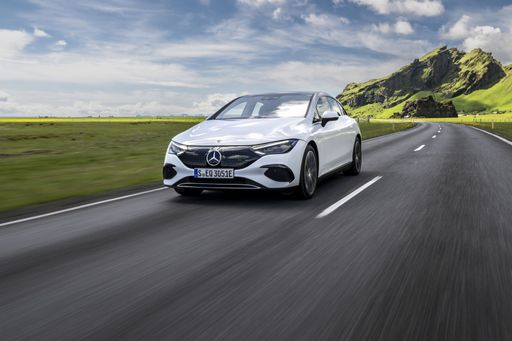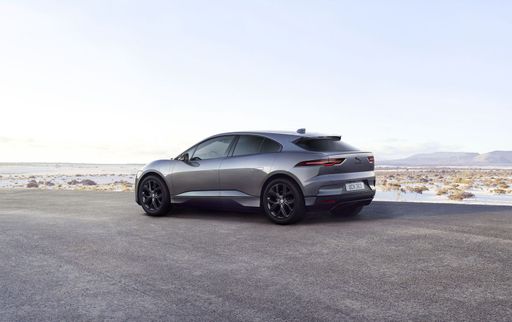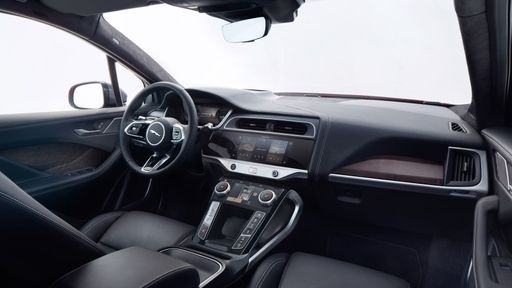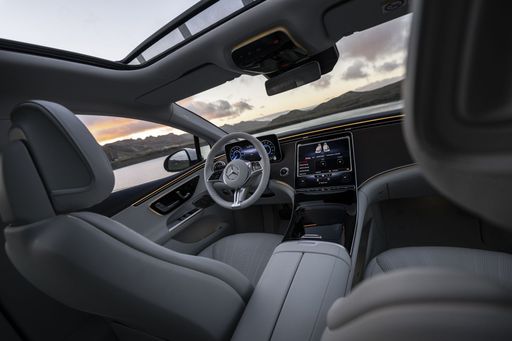Jaguar I-Pace vs Mercedes EQE – Which car suits you better?
Both models have their strengths – but which one suits you more?
Compare performance, efficiency, price and space directly: Jaguar I-Pace or Mercedes EQE?
Costs and Efficiency:
Price and efficiency are key factors when choosing a car – and this is often where the real differences emerge.
Mercedes EQE has a noticeable advantage in terms of price – it starts at 57600 £, while the Jaguar I-Pace costs 79200 £. That’s a price difference of around 21612 £.
In terms of energy consumption, the advantage goes to the Mercedes EQE: with 15.80 kWh per 100 km, it’s decisively more efficient than the Jaguar I-Pace with 25.20 kWh. That’s a difference of about 9.40 kWh.
As for range, the Mercedes EQE performs distinct better – achieving up to 691 km, about 222 km more than the Jaguar I-Pace.
Engine and Performance:
Under the bonnet, it becomes clear which model is tuned for sportiness and which one takes the lead when you hit the accelerator.
When it comes to engine power, the Mercedes EQE has a evident edge – offering 625 HP compared to 400 HP. That’s roughly 225 HP more horsepower.
In acceleration from 0 to 100 km/h, the Mercedes EQE is noticeable quicker – completing the sprint in 3.50 s, while the Jaguar I-Pace takes 4.80 s. That’s about 1.30 s faster.
In terms of top speed, the Mercedes EQE performs hardly perceptible better – reaching 220 km/h, while the Jaguar I-Pace tops out at 200 km/h. The difference is around 20 km/h.
There’s also a difference in torque: Mercedes EQE pulls evident stronger with 950 Nm compared to 696 Nm. That’s about 254 Nm difference.
Space and Everyday Use:
Cabin size, boot volume and payload all play a role in everyday practicality. Here, comfort and flexibility make the difference.
Both vehicles offer seating for 5 people.
In curb weight, Jaguar I-Pace is minimal lighter – 2226 kg compared to 2375 kg. The difference is around 149 kg.
In terms of boot space, the Jaguar I-Pace offers distinct more room – 638 L compared to 430 L. That’s a difference of about 208 L.
When it comes to payload, Mercedes EQE clearly perceptible takes the win – 600 kg compared to 444 kg. That’s a difference of about 156 kg.
Who comes out on top?
Overall, the Mercedes EQE shows itself to be is largely superior and secures the title of DriveDuel Champion.
It convinces with the more balanced overall package and proves to be the more versatile choice for everyday use.

Mercedes EQE
Jaguar I-Pace
The Jaguar I-Pace represents a remarkable fusion of cutting-edge electric performance and iconic British luxury. With its sleek design and spacious interior, this model redefines what one can expect from an electric vehicle in terms of style and comfort. Its impressive driving dynamics and advanced technology make it a standout choice for those looking to make a statement on the road.
details @ media.jaguar.com
@ media.jaguar.com
 @ media.jaguar.com
@ media.jaguar.com
 @ media.jaguar.com
@ media.jaguar.com
Mercedes EQE
The Mercedes-Benz EQE epitomises the brand's commitment to luxury and electric mobility, offering a seamless blend of cutting-edge technology and elegant design. Inside, occupants are treated to a sophisticated cabin that combines high-quality materials with state-of-the-art infotainment features, ensuring a refined driving experience. On the road, the EQE impresses with its smooth, quiet ride and impressive agility, making it a standout choice for those seeking both comfort and sustainability.
details @ group-media.mercedes-benz.com
@ group-media.mercedes-benz.com
 @ group-media.mercedes-benz.com
@ group-media.mercedes-benz.com
 @ group-media.mercedes-benz.com
@ group-media.mercedes-benz.com
 @ group-media.mercedes-benz.com
@ group-media.mercedes-benz.com
 @ group-media.mercedes-benz.com
@ group-media.mercedes-benz.com

|

|
|
|
|
Costs and Consumption |
|
|---|---|
|
Price
79200 - 85500 £
|
Price
57600 - 94900 £
|
|
Consumption L/100km
-
|
Consumption L/100km
-
|
|
Consumption kWh/100km
25.20 kWh
|
Consumption kWh/100km
15.8 - 20.7 kWh
|
|
Electric Range
469 km
|
Electric Range
502 - 691 km
|
|
Battery Capacity
84.70 kWh
|
Battery Capacity
90.5 - 96 kWh
|
|
co2
0 g/km
|
co2
0 g/km
|
|
Fuel tank capacity
-
|
Fuel tank capacity
-
|
Dimensions and Body |
|
|---|---|
|
Body Type
SUV
|
Body Type
Sedan
|
|
Seats
5
|
Seats
5
|
|
Doors
5
|
Doors
4
|
|
Curb weight
2226 kg
|
Curb weight
2375 - 2540 kg
|
|
Trunk capacity
638 L
|
Trunk capacity
430 L
|
|
Length
4682 mm
|
Length
4946 - 4964 mm
|
|
Width
2011 mm
|
Width
1961 mm
|
|
Height
1566 mm
|
Height
1492 - 1510 mm
|
|
Max trunk capacity
1453 L
|
Max trunk capacity
-
|
|
Payload
444 kg
|
Payload
545 - 600 kg
|
Engine and Performance |
|
|---|---|
|
Engine Type
Electric
|
Engine Type
Electric
|
|
Transmission
Automatic
|
Transmission
Automatic
|
|
Transmission Detail
Reduction Gearbox
|
Transmission Detail
Reduction Gearbox
|
|
Drive Type
All-Wheel Drive
|
Drive Type
All-Wheel Drive, Rear-Wheel Drive
|
|
Power HP
400 HP
|
Power HP
265 - 625 HP
|
|
Acceleration 0-100km/h
4.80 s
|
Acceleration 0-100km/h
3.5 - 6.9 s
|
|
Max Speed
200 km/h
|
Max Speed
210 - 220 km/h
|
|
Torque
696 Nm
|
Torque
550 - 950 Nm
|
|
Number of Cylinders
-
|
Number of Cylinders
-
|
|
Power kW
294 kW
|
Power kW
195 - 460 kW
|
|
Engine capacity
-
|
Engine capacity
-
|
General |
|
|---|---|
|
Model Year
2023
|
Model Year
2024 - 2025
|
|
CO2 Efficiency Class
A
|
CO2 Efficiency Class
A
|
|
Brand
Jaguar
|
Brand
Mercedes-Benz
|
What drivetrain options does the Jaguar I-Pace have?
Available configurations include All-Wheel Drive.
The prices and data displayed are estimates based on German list prices and may vary by country. This information is not legally binding.
